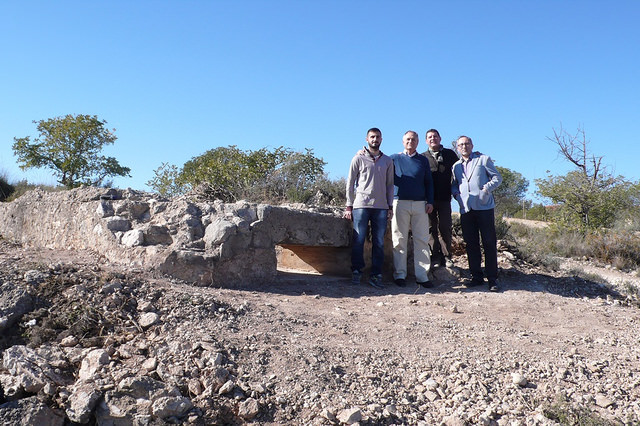
What is more important for you, any advertising campaign or a “trustworthy” recommendation by a friend? If you are proposed to go to a museum, would you find it an appealing plan? How many museums in Valencia do you know?
25 may 2016
These particular questions are the ones contemporary museums of the Valencian territory should question themselves when it comes to take their activity in social networks. There is a tendency through which people share with their surrounding environment a similar way of seeing and analysing reality. Therefore, this gives our closest people a great influence when we make decisions concerning what products can we buy or plan to buy and, of course, decisions on the activities we choose to spend our time. This conditioning is solved at the end of the 20th century, moment in which appears the Spiral of Silence, which is a political and mass communication science proposed by the German political scientist Elisabeth Noelle-Neumann in her book “The Spiral of Silence. Public Opinion: Our Social Skin (1997)”. In this volume where Neumann identifies that public opinion can be a way of social control where individuals adapt their behaviour to the predominant attitudes on what is acceptable and what is not. As the sociologist Goffman said, “we all are actors.” Neumann concluded that “most people are afraid of isolation, therefore when expressing their opinion they try first to identify the ideas to take part in the majority or consensual opinion.”
On social networks, both on Facebook and Twitter, it constantly happens that if your friends do not validate or accept a determined opinion, you do not express it: The Spiral of Silence.
This lack, on the part of museums, of integration in social networks, develops a block on them when trying to reach the new generations.
Thus, personal recommendations are not a new fact. What did vary is the degree of influence and the reach we can have nowadays. One or two decades ago, we could reach more or less to ten people when we talked about an exhibition or a museum we specially liked. Nevertheless, today the use of social networks multiplies this spectrum of influence, of our opinion on the rest of people, by widening the “by word of mouth” effect. This multiplier ricochet is today much bigger. The impact or its spreading degree are almost incalculable.
Which are the five museums with the most attendance in Valencia? Why?
Following with the reflection on why contemporary museums have lower attendance, specially from the young audience, we can see which are the five most visited museums in Valencia and what they all have in common.
5. Museu de Belles Arts de València San Pio V
With over 150,000 visits, the Museu de Belles Arts de València San Pio V, a state picture gallery managed by the Valencian Government, is the fifth most visited museum of the city. On last December, twelve years after, its new trust met to “avoid anomalous dynamics from other times.” The objective is clear: reinventing itself. Nowadays, it is run temporarily by José Ignacio Casar Pinazo.
4. Centre Cultural La Beneficència
The Centre Cultural La Beneficència has over 200,000 visits. Located in Corona Street, the old convent hosts the Prehistory Museum of Valencia and the Valencian Museum of Ethnology.
3. MuVIM
The Valencian Museum of Illustration and Modernity (MuVIM) was visited by almost 300,000 people, becoming the third on the list. During 2016, has reopened its permanent room, with which they expect to recover part of their public, specially school groups which represented a continuous part of the visits.
The space was inactive from 2014, due to a breakdown in part of the facility. However, the regional culture councillor, Xavier Rius, and the director of the museum, Rafael Company, called it an unnecessary closing. From last December, the room is open again and waiting the renovation, which is already scheduled. Another museum that tries to progress and offer added values.
2. The Lonja
With almost half million visitors, the Lonja obtains the silver medal, as a second most visited space in the city. Its own value gives it an advantage with respect to other museums, as it is one of the few examples of civil gothic civil architecture in all Europe (together with the Cathedral). Not only that, two decades ago UNESCO declared it the first and only World Heritage Site located in Valencia.
2016 is a doubly special year for them. Apart from its cataloguing anniversary, it becomes the symbol of the year when the Cap i Casal assumes the captaincy of the Silk Road. It was built by Pere Comte and its helical columns or orange trees in the patio are a sign of the Ciutat Vella.
1. Principe Felipe Science Museum
With more than a million entries, it is the only museum to reach this register and it obtains a clear and prominent hegemony. The City of Arts and Sciences is a great tourist draw. Its modern and innovative style attracts a more modern public and offers some contents that make a great difference. The Oceanogràfic also received over one million visits (1.002.966) while the Hemisfèric sold 289.554 tickets. Together with the Àgora and the celebration of events in this space, the City of Arts received over 2.8 million visits altogether.
As we can see, the most important Valencian museums seek to offer interesting elements that represent an innovation, with respect to the contents they offered before and the features that characterise them. The need for visibility on social networks and being known by all of these new initiatives represents a differential value regarding its positioning.








